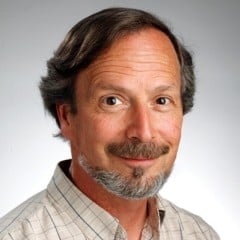How Today’s Entrepreneurs Use Continuous Innovation to CreateRadically Successful Businesses
You can tell that Eric Ries has a lot of experience as an entrepreneur when he sums up his two decades in business by saying, “Our productive capacity greatly exceeds our ability to know what to build.”
You can also tell that his will be a book that may have lessons for farmers, who know at least as well as anyone else in business that if you just grow corn or canola, or if you just seed wheat or soybeans, the world is going to catch up with you and threaten your survival.
Read Also

Producers aren’t panicking over tariffs and trade threats
The influence of tariff and trade uncertainity on farm business decisions.
Instead, farmers always need to push the frontiers on grain quality in order to stay out of a race-to-the-bottom pricing battle with the rest of the world, and they always need to be introducing new end-use traits and new customer programs to differentiate our crop and animal products from what buyers can get elsewhere.
The whole point of The Lean Startup is to show that businesses outside of agriculture have decided that the old way of deciding how to push those frontiers and how to identify those end-use traits are obsolete.
More important, Ries would tell most farmers that our business plans are all based on business strategies that should have been tossed on the scrap heap at the same time we tossed out our rotary phones.
It’s a shocking idea in agriculture, where if farmers know anything it’s how to put a sharp pencil to paper to figure out how to put an extra dollar in the bank.
You mean, we’ve been getting it wrong?
Ries’s audience is huge. The Lean Startup is a best seller, and he is hugely influential elsewhere too. He’s a top business speaker in the U.S., and he’s “entrepreneur in residence” at the Harvard Business School, where he talks about all the things he did wrong during the tech boom in Silicon Valley.
His basic premise is this. The number one characteristic of today’s entrepreneurs isn’t that they know how to engineer a better widget, or how to cut the cost on a whatchamacallit. It’s that they must deal with uncertainty.
From Ries’s point of view, this means that manufacturers need to throw out all the old rules about how to develop new products. By extension, the same could go for farmers.
Is it all smoke and mirrors, the latest in an endless stream of bizspeak? Or is there something here that farmers can learn too?
You decide. Ries agrees with other business academics that the most influential business book of the 20th Century was F. W. Taylor’s The Principles of Scientific Management, first published in 1911. It’s the book that made Henry Ford’s assembly line possible, basically by carving a complex job into a lot of smaller jobs, and then hiring someone for each micro-job and setting them up for maximum efficiency.
The same model gets used for innovation and product development. The business world put engineers in one room, marketing people in another room, and HR people in a third room, and then tells them to come up with new ideas.
Toyota was the first to break the model in the 1980s when it developed the system that got called lean manufacturing. Don’t keep your skilled players separate, Toyota said. Put them all together to share their skills.
Now, instead of an auto industry that produces a few models with a few options, car makers basically produce platforms that are almost infinitely customizeable. In 1968, the Chevrolet Impala had a 13 per cent share of a U.S. car market that had 40 different cars, basically with a choice of standard or automatic, and with radio or without. Today, there are over 250 models, with only 10 having a market share of more than a half per cent.
Ries would tell us that the same is going to happen to agriculture. Or at least, it’s going to happen to the farmers who are going to earn the top per-acre incomes, and therefore be able to outcompete other farmers for land.
How will these farms be different than today’s? Mainly, they will be cross-functional. To follow Ries’s thinking, individual farmers will form partnerships and joint ventures with food scientists and dietitians, much like the way the computer startups hire the best and brightest from MIT and Stanford.
Of course, sometimes it won’t be an individual farmer. It will be a cluster of farms, or perhaps a somewhat larger incorporated framework, but it won’t look like the commodity boards created in past. It will be smaller, tighter, and far higher in energy.
In an industry that has heard predictions about nutraceuticals for well over a decade, and that feels like we’ve been promised 10 new end-use traits for every one that materializes, we can be forgiven if we’re sceptical.
Still, if your son or daughter is planning a farm career, maybe you should watch to see if their eyes light up at the thought of what this future could hold. CG















